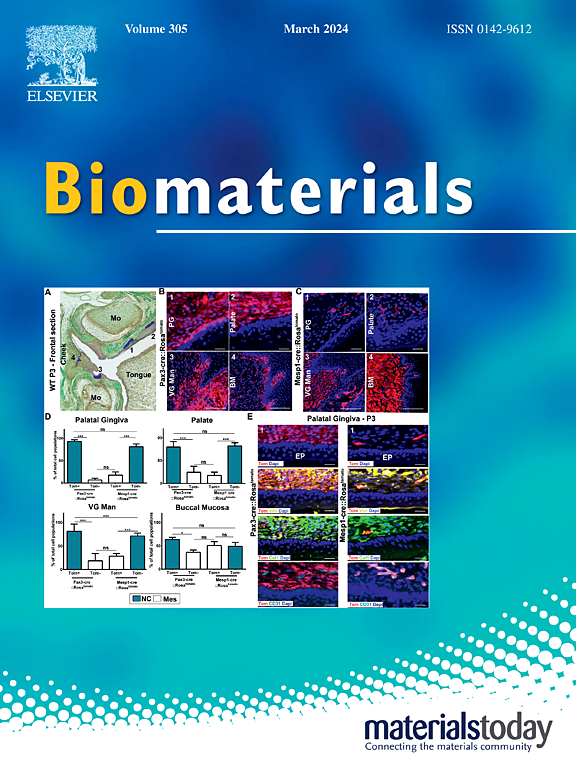Implant derived high local concentration of magnesium inhibits tumorigenicity of osteosarcoma
IF 12.8
1区 医学
Q1 ENGINEERING, BIOMEDICAL
引用次数: 0
Abstract
Osteosarcoma (OS) is a fatal malignant tumor that occurs in bone, whose main treatment is surgical resection. With anti-tumor and osteogenic effects, Magnesium (Mg) is a promising biodegradable metal for postoperative treatment in OS, however, its anti-OS effect and mechanism still need to be explored. Here, while holding the ability to promote osteogenesis, Mg metal at the same time significantly reduces the proliferation, migration and invasion of various OS cells (UMR106, 143B, K7M2) in vitro. Similarly, it inhibits the growth and lung metastasis of UMR106 induced tumors in xenograft models in vivo. The mRNA-seq analysis shows that Mg significantly inhibits Wnt-pathway (increased APC, Axin2 and GSK3β to induce degradation of β-catenin) in typical OS, which is further verified by western blotting and immunofluorescence analyses. A Mg2+ concentration of 240 mg/L, either from Mg metal extract or Mg salt (MgCl2), equivalently exhibits significantly increased APC, Axin2, GSK3β and decreased β-catenin, and then inhibits tumorigenicity of typical OS cells. This work reveals that a local high concentration of Mg can inhibit OS by down-regulating Wnt-pathway, and meanwhile favors for normal health bone, which demonstrates a new approach and mechanism in the treatment of OS with Mg-based biodegradable metals.

求助全文
约1分钟内获得全文
求助全文
来源期刊

Biomaterials
工程技术-材料科学:生物材料
CiteScore
26.00
自引率
2.90%
发文量
565
审稿时长
46 days
期刊介绍:
Biomaterials is an international journal covering the science and clinical application of biomaterials. A biomaterial is now defined as a substance that has been engineered to take a form which, alone or as part of a complex system, is used to direct, by control of interactions with components of living systems, the course of any therapeutic or diagnostic procedure. It is the aim of the journal to provide a peer-reviewed forum for the publication of original papers and authoritative review and opinion papers dealing with the most important issues facing the use of biomaterials in clinical practice. The scope of the journal covers the wide range of physical, biological and chemical sciences that underpin the design of biomaterials and the clinical disciplines in which they are used. These sciences include polymer synthesis and characterization, drug and gene vector design, the biology of the host response, immunology and toxicology and self assembly at the nanoscale. Clinical applications include the therapies of medical technology and regenerative medicine in all clinical disciplines, and diagnostic systems that reply on innovative contrast and sensing agents. The journal is relevant to areas such as cancer diagnosis and therapy, implantable devices, drug delivery systems, gene vectors, bionanotechnology and tissue engineering.
 求助内容:
求助内容: 应助结果提醒方式:
应助结果提醒方式:


